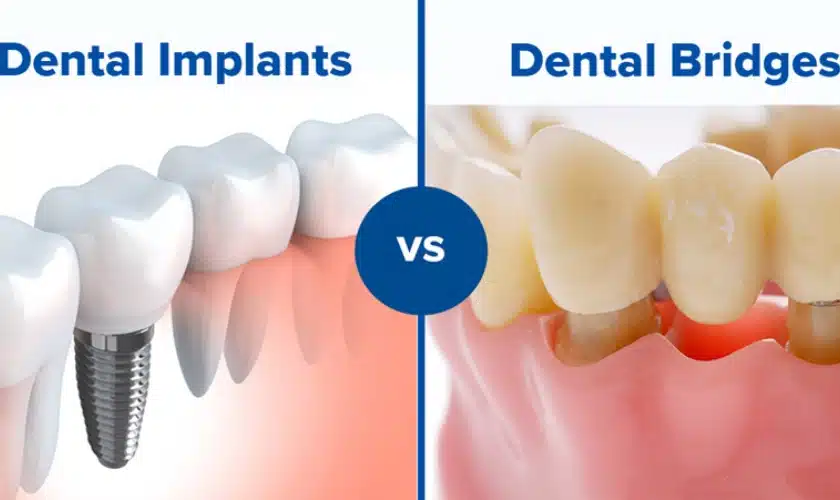Getting My Dental Sense To Work
Table of ContentsOur Dental Sense DiariesHow Dental Sense can Save You Time, Stress, and Money.More About Dental SenseDental Sense Can Be Fun For Everyone
are clinical tools operatively implanted into the jaw to bring back an individual's ability to chew or their look. They give assistance for artificial (phony) teeth, such as crowns, bridges, or dentures. When a tooth is shed due to injury or illness, a person can experience difficulties such as rapid bone loss, faulty speech, or changes to eating patterns that lead to pain.Dental dental implant systems are composed of an oral implant body and dental implant abutment and may additionally consist of a joint fixation screw. Same day dental implants. The oral implant body is operatively placed in the jawbone instead of the tooth's root. The dental implant abutment is generally affixed to the implant body by the abutment fixation screw and expands through periodontals into the mouth to sustain the connected fabricated teeth
(https://www.storeboard.com/dentalsense)Structure of The Oral Implant System selecting dental implants, speak to your oral service provider concerning the prospective advantages and risks, and whether you are a candidate for the procedure. Points to take into consideration: Your general health is a vital consider identifying whether you are a good candidate for dental implants, for how long it will take to heal, and the length of time the dental implant might remain in place.
Cigarette smoking may impact the healing procedure and lower the long-lasting success of the implant. The healing procedure for the implant body may take several months or longer, throughout which time you generally have a short-term abutment instead of the tooth. the oral implant treatment: Meticulously comply with the dental health guidelines offered to you by your dental service provider.
Our Dental Sense PDFs
Implant failing can lead to the need for another operation to deal with or change the dental implant system. Restores the capacity to eat Restores cosmetic look Assists keep the jawbone from shrinking as a result of bone loss Protects the health of the bordering bone and periodontals Helps maintain adjacent (nearby) teeth steady Improves high quality of life Damages to surrounding natural teeth during implant positioning Injury to the surrounding tissues throughout surgery, such as sinus perforation Injury throughout surgical treatment (as an example, fracture of bordering jawbone) Insufficient feature, such as really feeling like the teeth do not bite with each other generally A feeling that the tooth is loosened or twisting in location resulting from a joint screw loosening up Implant body failing (looseness of the implant body) due to systemic infection, which might be much more likely in clients with unchecked diabetes as a result of local infection in bone and periodontals sustaining the implant body because of delayed healing, which might be most likely in patients that smoke Difficulty cleansing the gum tissues around the implant, causing inadequate oral hygiene Untreated periodontal condition Post-surgical feeling numb due to nerve impingement or damages Always inform healthcare suppliers and imaging technicians that you have dental implants before any kind of magnetic vibration imaging (MRI) or x-ray treatments.
FDA is not aware of any kind of damaging events reported for MRI or x-ray treatments with dental implants. Oral implants systems are generally made from products that adhere to international agreement requirements of the International Organization for Standardization (ISO) or ASTM International. These standards have information of what makes a safe product.

A dental implant is a framework i was reading this that replaces a missing tooth. With screw-like gadgets, the cosmetic surgeon inserts an implant right into the jawbone, and it works as an anchor for an artificial tooth, called a crown. A device called an abutment links the man-made tooth to the oral implant. The crown is custom-made to fit the person's mouth and match the shade of their teeth.
The 9-Minute Rule for Dental Sense
Some people are not qualified for dental implant surgery. It is for oral surgeons to operate individuals with: intense illnessuncontrollable metabolic diseasebone or soft tissue condition or infectionIf these concerns are fixed, an individual can have the surgical procedure. In, oral specialists abstain from operating individuals with: If individuals with any one of the above undergo oral implant surgical treatment, there is a higher risk of the implant failing.

Dental dental implant surgery is an individualized process. Give you time to recover. Attach the message and final crown, bridge or denture.
Next off, your doctor will meticulously put the dental implant right into your jaw. Your doctor will rearrange your gums and shut the incision with stitches. If your dental implant is near the front of your mouth, your dental practitioner will make a short-term tooth for you to use till you heal. By doing this, you will not have a space in your smile while you recover.
What Does Dental Sense Do?
Your service provider can tell you what to expect in your situation. During the recovery stage, your jawbone should fuse to the oral implant. This procedure, called osseointegration, is crucial for stability and long-lasting success. This process can take anywhere from 3 to 9 months. In some instances, it may take longer.
As soon as your implant heals, your dental professional can affix the abutment (tiny adapter post) and your last reconstruction (crown, bridge or denture). This generally takes concerning one hour to complete and may need a second minor surgical treatment. You shouldn't really feel any kind of pain during your oral implant treatment since your supplier will make use of medication to numb your gums.